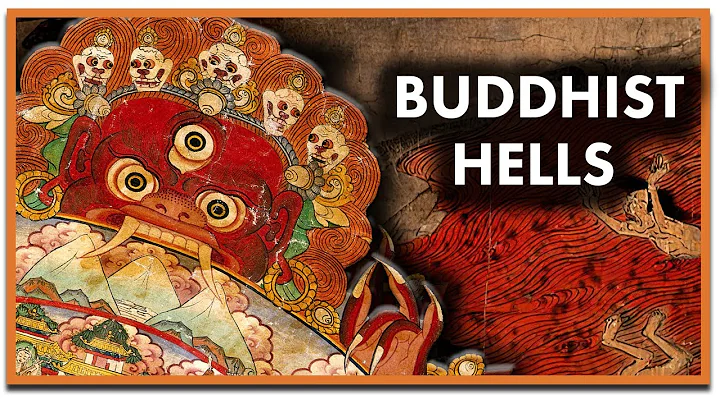On June 27, 2022, China Guardian 2022 spring auction was on its third day. In the evening auction, more than 60 fine works of Buddhist art were presented in the "Zhan Tan Forest - Collection of Buddhist Art" special session. Among them, the most highly valued item in this sale is a 14th-century gilt bronze statue of Vajradhara, which has attracted much attention.

 4th century gilt bronze statue of Vajrashara (inlaid with silver and gems)
4th century gilt bronze statue of Vajrashara (inlaid with silver and gems)
Height 33.8cm
Estimated price RMB 3.5 million-5.5 million
Transaction price 9.775 million yuan
 022-06-28 China Guardian
022-06-28 China Guardian
Zhan Tan Lin - Buddhism Art collection
in At the auction site, the bid started from 2.8 million yuan, during which new buyers continued to join. After more than ten bids, it quickly rose to 7.5 million yuan, and then continued bidding. Finally, it was hammered down at 8.5 million yuan, with a commission of 9.775 million yuan.

 4th century gilt bronze statue of Vajra (inlaid with silver and gems) (partial)
4th century gilt bronze statue of Vajra (inlaid with silver and gems) (partial)
Vajra, Sanskrit means the one who holds Vajra , and is the most widely accepted primordial Buddha in Indo-Tibetan Buddhism. The statue of the statue is well-proportioned, graceful in shape, vivid and expressive, with a full face and body. The details of the ornaments are exquisitely carved, and there are also turquoise and other gemstones on the ornaments.

 4th Century Gilt Bronze Statue of Vajradhara (Inlaid with Silver and Inlaid with Gems) (Part)
4th Century Gilt Bronze Statue of Vajradhara (Inlaid with Silver and Inlaid with Gems) (Part)
html The 114th-15th centuries were the heyday of the development of Buddhism in Tibet. Eminent monks and craftsmen from India, Kashmir, Nepal and other places came to work here. During this period, there were frequent exchanges and cooperation with local monasteries in Tibet. During this period, the rise of the jewelry inlaid decoration style of Danza statues gave us the opportunity to appreciate the splendid full-decorated necklaces and inlaid top statues hundreds of years ago. Fine art.
On June 27, 2022, China Guardian’s 2022 Spring Auction was on its third day. In the evening auction, the "Zhan Tan Lin - Collection of Buddhist Art" special session presented more than 60 exquisite pieces of Buddhist art, including masterpieces from the Ming and Qing Dynasties, as well as high-quality sculptures and paintings from India, Nepal, and Tibet. In the end, the total transaction volume of this special sale was 36.68 million yuan, with a transaction rate of 75%.

 4th century gilt bronze statue of Vajra Holder (inlaid with silver and gems)
4th century gilt bronze statue of Vajra Holder (inlaid with silver and gems)
Height 33.8cm
Estimated price RMB 3.5 million-5.5 million
Transaction price 9.775 million yuan
 022-06-28 China Guardian
022-06-28 China Guardian
Zhan Tan Lin - Buddhism Art collection
among them , the highest-valued lot in this sale is a 14th-century gilt bronze statue of Vajradhara, which has attracted much attention. At the auction site, the bid started from 2.8 million yuan, during which new buyers continued to join. After more than ten bids, it quickly rose to 7.5 million yuan, and then continued bidding. Finally, it was hammered down at 8.5 million yuan, with a commission of 9.775 million yuan. , leading this special event.

Ming Dynasty gilt-bronze Guangming Buddha Mother (Moli Zhitian)
Height 80cm
Estimated price RMB| 3 million-6 million
Transaction price 4.83 million yuan
 022-06-28 China Guardian
022-06-28 China Guardian
Zhantanlin - Collection of Buddhist Art
Ming Dynasty gilt copper The Bidding of Guangming Buddha Mother (Moli Zhitian) started at NT$2 million, and the price was hammered down at NT$4.2 million. The price was sold for NT$4.83 million plus commission, ranking second in the auction.

 4-15th Century Gilt Bronze Medicine Buddha
4-15th Century Gilt Bronze Medicine Buddha
Height 33.8cm
Estimated price RMB| 2.6 million-3.6 million
Transaction price 3.22 million yuan
 022-06-28 China Guardian
022-06-28 China Guardian
Zhantanlin - Collection of Buddhist Art
 4th-15th century gilt bronze pharmacist The Buddha was sold for NT$2.8 million and NT$3.22 million plus commission, ranking third in the sale.
4th-15th century gilt bronze pharmacist The Buddha was sold for NT$2.8 million and NT$3.22 million plus commission, ranking third in the sale.

 4-15th Century Gilt Bronze Sakyamuni Buddha
4-15th Century Gilt Bronze Sakyamuni Buddha
Height 22.6cm
Estimated price RMB 20,000-50,000
Transaction price 253,000 yuan
 022-06-28 China Jiade
022-06-28 China Jiade
Zhantanlin - Collection of Buddhist Art
In addition, this special session The biggest dark horse is the 14th-15th century gilt-bronze Buddha Sakyamuni, which was sold at the auction site for 253,000 yuan, ten times more than the low estimate.
Other high-priced items in this special sale include the Ming dynasty gilt bronze crown of Sakyamuni Buddha. The bidding started at 1.5 million yuan, went down to 2.1 million yuan, and was sold at 2.415 million yuan. The 15th-16th century alloy copper lotus master and the two concubines were hammered down for 1.5 million yuan and sold for 1.725 million yuan plus commission.

Ming Dynasty gilt copper crown Sakyamuni Buddha hammer with gilt backlight and throne
BUDDHA24.7cm; MANDORLA53.8×42.3×23cm
Estimated price RMB 2 million-4 million
Transaction price 2.415 million yuan
 022-06- 28 China Guardian
022-06- 28 China Guardian
Zhan Tan Lin - Collection of Buddhist Art

 5-16th Century Alloy Bronze Lotus Peanut Master and Er Mingfei
5-16th Century Alloy Bronze Lotus Peanut Master and Er Mingfei
Height 26.5cm
Estimate RMB| 1.2 million-1.8 million
Transaction price 1.725 million yuan
 022-06 -28 China Guardian
022-06 -28 China Guardian
Lot 3886

Ming Yongle (Palace)
Gilt Bronze Sakyamuni Buddha
Height 15 cm
Source: Xueyue (TuyetNguyet, 1934-2020 ) and Stephen Markbreiter (1921-2014) archeology of Sakyamuni Buddha statues from the old collection
Yongle
Researcher at the Palace Museum Director of the Institute of Tibetan Buddhist Cultural Relics Luo Wenhua
The Yongxuan statue is a representative work of palace statues in the Ming Dynasty. Although the era spanned three emperors, that is, the Chengzu period (Yongle, 1403-1424), Renzong (reign "Hongxi", 1424-1425) and Xuanzong (reign "Xuande", 1425-1435), but researchers often call it the Yongxuan period because there are many palace statues seen so far. The main ones are "Ming Dynasty Yongle Nian Shi" and "Da Ming Xuande Nian Shi", but Renzong's reign name has not been seen. This is related to the fact that Renzong reigned for less than a year. It also shows the important role played by the Yongle and Xuande periods in the early Ming Dynasty in the Tibetan Buddhist statues in the court.

In the past ten years, Yongxuan palace statues have been highly praised for their exquisite craftsmanship, exquisite decoration, thick gilt and calm colors, which highlight the royal demeanor. With the progress of research, the number of Yongxuan statues continues to increase, which is of great benefit to us to further understand the artistic style and multi-cultural influence of Yongxuan palace statues. This image is one of the representative works.

This statue is Sakyamuni Buddha, with a height of 15 cm. The conch's hair is painted blue and its face is made of gold, which are the main features of Tibetan Buddhist statues. The gold and gold has completely peeled off. He has a square face with a wide forehead, a straight nose bridge, a prominent white dot between his eyebrows, and three obvious auspicious lines on his neck. The Buddha's shoulders are broad and thick, his back is curved inward, and his spine is very obvious. This is a traditional feature of human body expression in statues in India and the Himalayas. Wearing a cassock with the right shoulder exposed, the pleats and skirt lines of the cassock are natural and vivid. The right hand is touching the ground and the left hand is applying the meditation seal, which shows the image of Sakyamuni Buddha becoming enlightened under the Bodhi tree in Bodhgaya . It is mainly popular in central Tibet. The Buddha is sitting on the lotus platform with his back, and the upper and lower lotus petals are arranged neatly. The lotus petals are full and slender, the lines are elastic, and the petal tips are rolled up. This is the main feature of Yongxuan's statue. On the front of the pedestal, there are inscriptions from left to right, "Yongle Year of the Ming Dynasty", which proves its royal origin. The brass back cover is reinforced by eight clear crenellations, and the middle Yin line of copper plate is engraved with a cross pattern. As a proof of blessing, there are still remnants of vermilion lacquer on the surface. This is a way of offering sacrifices and is very popular in Nepal. was introduced to China in the Yuan Dynasty and was mainly seen in the Yuan Dynasty palace and Tibetan statues. The palace statues of the Ming Dynasty also adopted the same way of offering offerings, which should be the result of inheriting the Nepali tradition. The overall golden color of the statue is complete and bright, and the shape is regular and exquisite, representing the level of palace statues in the Ming Dynasty.

This collection was first collected by the couple Tuyet Nguyet (Chinese name: Xueyue, 1934-2020) and Stephen Markbreiter (1921-2014), the founders of the "Arts of Art" magazine.

The uniqueness of this statue is that its size is only 15 centimeters, which is a small statue among the Yongle statues. Among the Yongxuan statues, most of them are between 23 and 25 centimeters in height. But this is not necessarily the case. There are also many statues smaller than this size in public and private collections. Taking the Speelman collection as an example, there are not many examples with full-height dimensions between 18 and 21 centimeters, which are medium-sized sculptures [1]. This statue is smaller in size and should be the smallest work. Although smaller in size, the level of craftsmanship remains undiminished. The question is, is the function of this smallest work different from that of large and small statues?

According to the existing cultural relics, this small statue is likely to come from the main deity in the lotus mandala, such as Treasures of the Potala Palace The main figure in the Yamantaka mandala in the museum is similar in size (Figure 1-2); however, the flowering mandala made by the Ming court does not have Sakyamuni Buddha as the main figure. Examples can prove that this situation seems to be less likely in this statue.

Ming Dynasty Yongle Majesty Vajra Mandala, Potala Palace Hidden
There is another piece of historical data that provides us with a new answer to this question. According to the important historical material of the Ming Dynasty, "The Origin of the Buddha in the West", the eminent monk Bandan Zhashi (1377-1452) of the four dynasties from Yongle to Jingtai in the Ming Dynasty once made a variety of statues using silver, gilt copper, and sandalwood In the third year of Yongle (1405), Zhu Di issued an edict to invite him to Beijing. When he went to Nanjing for an audience, he was favored by Zhu Di. At that time, he ordered "according to the scriptures and the law, and ordered all craftsmen to make altars, statues, bells and pestles for offerings." [2] It can be seen from this that during the Yongle period, palace statues were promoted. Under the guidance of foreign eminent monks, the statues in the mandala are meant to make small bronze statues for the members of the three-dimensional mandala. It is unknown whether this statue is one of them. What needs to be clarified is that it is not like there was a so-called Buddha-making place in the Ming Dynasty palace as previously rumored, but "different work". In fact, just like the Qing Dynasty palace, different workshops worked together to complete all the ritual objects. Make. If this is true, this type of small statue should be one of the three-dimensional palace statues of the Ming Dynasty, and it was cast together with other family members according to the structure of the mandala, but it is now scattered and cannot be restored. Such statues deserve close attention from collectors.
Note:
[1]Sotheby’s, “Visions of Enlighten: The Speelmen Collection of Important Early Ming Buddhist Bronzes”, October 2006.
[2] Zhang Runping , Su Hang, and Luo Cheng, eds.: "The Origin and Flow of the Buddha in the West: Literature and Preliminary Research", Beijing: China Social Sciences Press , 2012, pp. 248-249.


Lot 3900
Tibet17 -18th century alloy copper statue of Milarepa (inlaid with gold and silver, partially gilded)
 3cm. high.
3cm. high.
Source: Former collection of Xueyue (Tuyet Nguyet, 1934-2020) and Stephen Markbreiter (1921-2014) 5
this respect Milarepa , with long curly hair on top of her head and a natural shawl, sits comfortably on a goatskin. Under the goatskin is a square rock base that symbolizes a cave. She wears a layman's uniform with her right shoulder exposed and a gold-embedded meditation belt draped diagonally. . The entire statue is made of alloy copper, and the goatskin seat cushion adopts gilding process . The gold and silver inlaid patterns on the regular clothes are very creative. The outline and veins of the petals are represented by incised and connected small dots, and the staggered silver dots are used to express the appearance. The petals are decorated with gold small dots to represent the flower core, and the flowers are all over the clothes.The edge of the neckline is decorated with two staggered gold lines to represent the edge of the garment, and a row of small staggered silver dots is decorated in the line. The edge of the garment is decorated with large staggered silver dots in the middle of two black lines. The whole body is very gorgeous and extraordinary. For patterns using similar craftsmanship, we can refer to the pattern on the chest of a 17th-18th century gold and silver alloy bronze statue of Vajrasattva in the Philadelphia Museum of the United States; and a eleven-faced Guanyin standing statue in the Palace Museum. 2's skirt; and the pattern on the skirt behind a Virupa statue hidden in Norbulingka [3]; the inlaid patterns on the skirts of these statues use the technique of using dotted circles to surround the petals, which is similar to that of Jiade The lot in this auction is almost the same, and the last two pieces, one is a Buddha statue presented to the Qing Palace from Tibet, and the other is from the Norbulingka Palace Collection. It can be seen that this decorative technique should be a popular practice for high-end customized Buddha statues at that time .

Lot3900 Comparison of parts of Milarepa's statue with reference to parts 1-3
The statue of the original figure does not have Milarepa's signature action of holding his right hand beside his ear, but is sitting in a comfortable posture with his clothes hanging loosely, fully displaying It captures the relaxed posture and expression of a yogi. For a statue of Milarepa in a similar posture, please refer to Bonhams New York, March 14, 2017, lot 3220, which is also in a comfortable sitting position with the right hand naturally resting on the knee. Based on the exquisite carving craftsmanship and the luxurious gold and silver decoration regardless of cost, it is obvious that this is a statue of a very high standard, and it is likely to belong to a high-ranking monk from a large monastery or a Tibetan aristocrat at that time. In the field of circulation, such a luxurious statue of Milarepa is extremely rare, and its artistic value and investment value are both unlimited.
See:

"TIBET TRADITION & CHANGE", catalog of the exhibition of the same name from October 1997 to January 1998, published by The Albuquerque Museum, 1997, 100 pages, Picture 50

"Image and Style - Tibetan Buddhist Statues in the Palace Museum", edited by the Palace Museum, Forbidden City Press , 2002, Volume 2, 286 pages, Picture 116

"Selected Collection of Norbulingka Cultural Relics", edited by Nyima Tenzin , China Tibetology Press , 2011, pp. 28-29.


Lot 3851
Tibet 17th-18th century
Gilt copper inlaid gemstone confession
4.8x70.3x37.6 cm
This confession consists of three parts: the top tabletop, the bottom foldable three-sided table base, and the frame connecting the two parts.
 . The desktop is in the shape of an inverted trapezoidal cube. The four sides of the top surface are decorated with simple hollow patterns. The four sides of the desktop are embossed with double-layered lotus petals inside and outside. There are shallow carved lines in the center of each lotus petal, and the edges are gilded with strips. It has the style of early Kashmiri statues before the tenth century. The tips of the petals are decorated with wave patterns. No matter what is offered on the altar, it looks like it is offered on the lotus base from a distance.
. The desktop is in the shape of an inverted trapezoidal cube. The four sides of the top surface are decorated with simple hollow patterns. The four sides of the desktop are embossed with double-layered lotus petals inside and outside. There are shallow carved lines in the center of each lotus petal, and the edges are gilded with strips. It has the style of early Kashmiri statues before the tenth century. The tips of the petals are decorated with wave patterns. No matter what is offered on the altar, it looks like it is offered on the lotus base from a distance.
 . The connecting frame part of the upper and lower parts. In the center of the front, there is a cross Vajra inlaid with gemstones. Vajra has Chinese-style flower windows on both sides and two side legs, with a total of four side images of four-way dragons embossed in relief. The dragon's mouth is wide open and vivid. The four corners are also decorated with cross pestles embedded in dense lotus branches and leaves, cleverly one half on each side.
. The connecting frame part of the upper and lower parts. In the center of the front, there is a cross Vajra inlaid with gemstones. Vajra has Chinese-style flower windows on both sides and two side legs, with a total of four side images of four-way dragons embossed in relief. The dragon's mouth is wide open and vivid. The four corners are also decorated with cross pestles embedded in dense lotus branches and leaves, cleverly one half on each side.
 . The bottom is where the main patterns of the confession are concentrated, and the main patterns on three sides are surrounded by rectangular turquoise beads. In the center of the pattern carved on the front is a Dapeng with a bird's face and human body and eagle feet. It has its hands with wings spread out as if it wants to fly high. The feathers on its head are clearly carved and decorated with the sun and moon. On both sides of the roc are two dragon girls with human bodies and snake tails, dressed as Bodhisattvas, with nine snakes stretching out from behind their necks to cover their heads.Like the wings and arms of the roc, these two people have snake tails and have both feet. Each of them has a leg stretched out towards the central roc, and the ankles of the roc's feet happen to be grasped.
. The bottom is where the main patterns of the confession are concentrated, and the main patterns on three sides are surrounded by rectangular turquoise beads. In the center of the pattern carved on the front is a Dapeng with a bird's face and human body and eagle feet. It has its hands with wings spread out as if it wants to fly high. The feathers on its head are clearly carved and decorated with the sun and moon. On both sides of the roc are two dragon girls with human bodies and snake tails, dressed as Bodhisattvas, with nine snakes stretching out from behind their necks to cover their heads.Like the wings and arms of the roc, these two people have snake tails and have both feet. Each of them has a leg stretched out towards the central roc, and the ankles of the roc's feet happen to be grasped.

In the large-area gilt pattern, the two dragon tails are cleverly not gilded, revealing the moist copper color, which perfectly echoes the ungilded border of the entire object, and at the same time highlights the beauty of the picture. Three-dimensional feeling. The angry head just below the Dapeng is an image of Zhibaza that often appears in Tibetan Buddhism and is also one of the most important protector gods of the Tibetan people. On the outside of the two dragon tails, there is a Capricorn fish standing on two small lotus pedestals. It spits out a jewelry chain, and the end of the chain is embedded with gem Mani orbs. The fish tail curls up and blooms, like a vine with dense branches and leaves. gaps in the screen.
The table leg plates on both sides are carved with a dragon on each side. The carving craftsmanship of the two dragons is extremely exquisite. The scales of the dragons on their bodies are visible. The most interesting thing is the overall shape and direction of the dragon heads. The bodies of the two dragons are coiled. When viewed from a distance, the whole body is The appearance is very similar to the cross vajra, and the faucet heads are facing the direction of the front panel, which is very rare in artworks that represent the Chinese dragon. The two dragon horns are also decorated with a sun and moon pattern held on a small lotus platform.

There are a total of six dragons carved in the whole work. The dragon's spine, tail and head of each dragon are gilded, and each dragon holds a gilt Mani orb in each of its four claws. The background behind the dragon is filled with dense rolling waves, some of which are gilded on the corners. The table legs on both sides are mostly copper and some are gilded, which greatly enhances the three-dimensionality of the overall picture. In the same way, in the large area of gilt on the front table legs, a small part of the ungilded copper color is retained (the tail of the two dragons, the orb in the little dragon's hand, etc.), which makes the whole thing more three-dimensional and artistic.
The altar table is made with hammer craftsmanship, delicate carvings, the delicate and sweet faces of the two dragon girls, the unique lotus petals, and endless imagination and creativity. We speculate that this piece clearly has the style of Nepali sculpture. The work is most likely the work of a Nepalese workshop in Tibet; in addition, the decorative specifications and artistry of this altar table are so high, and the religious significance contained in the details should be used by Tibetan nobles or high-level clergy in monasteries. In some During Buddhist activities, this type of offering table is usually placed on the right side of the living Buddha's throne, with a height slightly lower than the throne, so that the living Buddha can easily access the pure bottles, ritual utensils or tea sets on the offering table.
See:

Buddhist Ritual Art of Tibet, A Handbook on Ceremonial Objects and Ritual Furnishings in the Tibetan Temple, Michael Henss , Arnoldsche Art Publishing House, Stuttgart, 2020, pp. 354-355, figures 473-475.

"Treasures - Historical Cultural Relics of Tibet, China", editor-in-chief of the editorial board of "Treasures", Chaohua Publishing House, 2015, 146 pages.




Lot 3910
Tibet 18th century
Cotton cloth Mineral pigments Padmasambhava, Horsehead Mingyang, Lion-faced Buddha Mother Thangka A set of three 5
 3 x 46cm.each
3 x 46cm.each
This is a set of 18th century Tibetan thangka works in perfect condition, painted The style and mounting style are completely consistent and can be judged to be the same series of works. The three thangkas all use dark blue as the background color. Among the three main deities, King Horsehead and the Lion-Faced Buddha are both in red. Master Padmasambhava is dressed in red and orange clothes. The contrast between warm and cold colors is obvious. But blending in perfect harmony.According to the inscription written in gold powder on the painting, the main image of Padmasambhava depicts Jamon Nyingpo 1 (inscription 'ja'tshonpa, Tibetan transliteration: Jatson Nyingpo, 1585-1656) and Daxiang respectively in the left and right corners. Banuden Dorje 2 (inscription: rtag sham pa, Tibetan transliteration: Taksham Nüden Dorje, 1655-1708), Jamon Nyingpo and Nüden Dorje, both are Ningma sect famous tertons, Nüden Dorje He is also a disciple of Düddul Dorje (Düddul Dorje, 1615-1672), a disciple of Jamun Ningbo. As for the main statue of the Lion-Faced Mother Buddha, the image of the guru depicted above the head of the main statue has the inscription naMkha. This person should be Namkha Jikme, a famous terton and a disciple of Ningbo . . Therefore, taken together, these three thangkas are the Thangkas inherited from the Ningbo terma of Jamun.

Part of the Padmasambhava Thangka, Jamun Ningbo (left) and Daxiangpa

Part of the Lion-faced Buddha Mother Thangka Nankha Jimei
Terma refers to the secret of Master Padmasambhava buried for the good fortune of future generations of disciples. The teachings and their secret texts are mainly scriptures, but there are also statues and magical instruments. Padmasambhava taught various teachings to his disciples and buried those teachings that emerged from the enlightened thoughts of him, Yeshe Tsogyel, and other great Buddhist masters for subsequent generations of followers to discover. After the 16th century, such scriptures called termas appeared in large numbers in Tibet. Therefore, the thangka passed down by the Tertön usually starts with a portrait of Padmasambhava. This set of three thangkas passed down by Tertön Ningbo of Ningbo, the Nyingma sect, has clear and vivid character depictions and fine painting techniques. The most important thing is that the backs of the three thangkas are blessed by eminent monks’ handprints and mantras, which makes them even more special. It is a masterpiece of painting with rare subject matter and perfect painting skills and appearance among the Thangkas handed down from generation to generation in the 18th century.


Lot 3903
Tibet 16th century
Gilt bronze Gandiba statue
 .9 cm.high.
.9 cm.high.
Record:
 . It was held from October 18, 1997 to January 18, 1998 at the Albuquerque Museum in New Mexico, USA Exhibited in the "Tibet: Tradition and Change" exhibition, see the exhibition catalog "TIBET TRADITION & CHANGE" (TIBET TRADITION & CHANGE), published by The Albuquerque Museum, 1997, p. 26, Figure 13.
. It was held from October 18, 1997 to January 18, 1998 at the Albuquerque Museum in New Mexico, USA Exhibited in the "Tibet: Tradition and Change" exhibition, see the exhibition catalog "TIBET TRADITION & CHANGE" (TIBET TRADITION & CHANGE), published by The Albuquerque Museum, 1997, p. 26, Figure 13.
 . "Art of Tibet" (Art of Tibet), published by Robert E Fisher, Thames and Hudson, 1997, 63 pages, Figure 41.
. "Art of Tibet" (Art of Tibet), published by Robert E Fisher, Thames and Hudson, 1997, 63 pages, Figure 41.

description (1)

description (2)
This energetic statue of a yogi depicts Gandiba, one of the eighty-four great siddhas in India. Ghantapa's original name is Hui Zangxiang, also known as Zhibuba, Gangtapa, etc. He received the prophecy of Vajrayana and became a scholar who was proficient in the Five Mings of , profound in knowledge, and good at conquering heretics. After that, he traveled around and preached Buddhism. It is said that the vajra in his hand was transformed by his parent and son, and the vajra bell in his hand was transformed from a bottle of sweet wine. Gandiba used the two as weapons and dropped a flood, almost drowning the king who had evil thoughts about him. Gandiba is also known as the "bell bearer".
In this statue, his legs are sitting on an antelope skin in a relaxed yoga posture, with a simple Zen mat underneath. He holds a vajra bell in his left hand and a vajra pestle in his right hand, as if performing a spell-casting ritual. The lower body wears a short apron and has a slim figure, decorated with cross belts, bracelets and armlets. The hair is painted black and is arranged in a spiral bun decorated with jewels and preceded by a small skull crown, a clear indication of his tantric attributes as a yogi.The bodies of the characters present extremely vivid twisting postures. Unlike most conventional Buddhist statues, the statues of yogis or mahasiddhas are usually more vivid and have more individual expressiveness. We can see various kinds of them in many paintings of mahasiddhas. This is a statue of an achiever with an exaggerated posture, but the large-scale twisting posture in the sculpture is so natural and vivid, which shows that the artist at that time accurately grasped the muscles and strength, which amazed the viewer.
This statue once appeared in Robert E Fisher In the book "Tibetan Art" published in 1997, this statue was identified as Gandiba; in the book "Tibet - Tradition and Change" published in the same year, this statue was named "Tantric Yogi" . A 19th-century Tibetan thangka depicting Gandiba from the Rubin Museum in New York1 holds the same religious instrument as the original figure; the Himalayan Art Directory website (Himalayanart.org) includes a statue of Gandiba with an inscription2. The magical implements and other image elements he holds are basically the same as the actual statue. Therefore, although there is no inscription on this statue, based on the magical implements and posture of his hands, we can still speculate that his identity is most likely to be Gandiba, one of the eighty-four great siddhas.
See:

"Holy Madness-Portraits of Tantric Siddhas" (Holy Madness-Portraits of Tantric Siddhas), edited by Rob Linrothe, published by the Rubin Museum of Art, New York, 2006, 211 pages, catalog 11.

Himalayan Art Directory Website (Himalayanart.org), No. 2274


Lot 3937
Tibet 15th century
Bronze gilt Gold Chakrasamvara
 9 cm.high.
9 cm.high.
Source: European private collection, purchased from Bharany in London in 1968
This statue depicts It is the twin statues of Chakrasamvara embracing his concubine Vajrayana, which symbolizes the combination of wisdom and compassion in Tantric Buddhist faith. Chakrasamvara is one of the most popular gods in Tantric Buddhism in the Himalayan region after the 11th century.

The Lord Buddha has four sides and twelve arms, each side representing a unique Buddha's wisdom. He stands in a heroic posture with his right hand spread out, holding a vajra bell and pestle in his main hand and crossing his chest to embrace his spouse. His remaining ten hands hold various other magical weapons, including tambourines, yue knives, skull staffs, etc. The right leg of Ming Fei Vajra Haimu is wrapped around the waist of the Buddha. She holds a kabala bowl in her left hand and a yue knife in her right hand. Both the two main statues are decorated with intricate jewelery necklaces, and the father's head also hangs around his neck, hanging down between his legs. The original base has been lost, and Chakrasamvara was supposed to be placed on top of the Hindu gods Kalaratri and Bhairava, symbolizing the defeat of the enemies of Buddhist teachings.


Lot 3884
Qing Kangxi
rosewood wood carving lacquered gold sandalwood Buddha
 3.3 cm.high
3.3 cm.high
Sandalwood Buddha is a relatively special form of Sakyamuni image . According to the "Agama Sutra", the World Honored One became enlightened. Later, at the request of Emperor Sakyamuni , he went to the Trayastra Palace to lecture on Buddhism to his mother. King Youshen in the human world missed him, so he hired craftsmen and asked Moggallana to preside over it. The statue of Sakyamuni Buddha was erected. After the World Honored One returned from heaven to the human world, he personally consecrated the sandalwood statue. This statue is also the earliest sandalwood statue mentioned in the "Buddha Speaks of the Sandalwood Tree Sutra" and " Zhengfa Mindfulness Sutra ". This also gradually fixed the basic shape of the sandalwood Buddha, and the tradition of carving Buddha statues out of sandalwood originated from this.
This Buddha is carved from red sandalwood, with upright legs and bare feet standing on a round lotus-covered base. The right hand is half-raised in the fearless mudra, and the palm of the left hand is extended outward in the wish mudra. This is the typical mudra of Chantan Buddha.The Buddha's head is tied into a high bun, decorated with round jewels in front of the bun. He wears a round-neck, shoulder-length, wide cassock. The cassock is thick and has quaint engraved patterns with negative lines. The pleats are distributed in a U shape on the chest, and the top of the legs is The pleats are like water ripples, which is extremely peculiar. This is what is called Cao Yi coming out of water. This is the most important iconographic feature of the Zhantan statue. The lower part is a round rosette, and the tips of the lotus petals are engraved with the curly grass pattern unique to the Kangxi Dynasty statues. With its age, the patina is naturally mellow, and the color of the entire image is darker brown, showing the unique luster and charm of the wooden statue. From the facial features of the statue and the special lotus petals, this statue should undoubtedly be from the Kangxi Dynasty. For similar rosewood statues of Sakyamuni Buddha, we can refer to the 1.35-meter-tall sandalwood Buddha statue in the Palace Museum.
See:

Rosewood carved sandalwood Buddha collected in the Palace Museum
(Source: Palace Museum official website)


Lot 3876
Tibet 15th-16th century
Iron gold and silver skull stick
4.3 cm.
This rare Vajrayana Buddhist ritual utensil, Sanskrit The kapala danda, or skull stick, is an object held by the "method" in the right hand of many gods, such as King of Hell , Vajra of Fear and the Lord of the Corpse Forest, etc. It symbolizes the "death", termination or emptiness of karma, and is used to intimidate demons and subjugate all evil spirits in the "three realms". Its purpose refers to lot 3344 of China Guardian's 2017 Spring Auction, the external cultivator Yama Motian wielding a skull stick.

China Guardian 2017 Spring Auction, Lot 3344
This skull stick has very high design specifications and outstanding casting quality. The four sides of the main shaft are alternately decorated with shiny golden and silver spiral patterns. In Tibetan society, this is An exquisite magic weapon that can only be used by the highest level characters.
The details and craftsmanship specifications of the skull stick are consistent with the imperial ritual vessels of the Yongle period. Compare this to a Ming Yongle skull stick, see W. Zwalf, Buddhism Art and Faith, London, UK Museum Press, p. 210, fig. 307, and a Yongle skull stick from the Metropolitan Museum of Art 2, see Jeff Watt, Defining Yongle, New York, 2005, p. 74, fig. 27. In addition, in the "Important Buddhist and Hindu Art" sale held by Christie's Amsterdam on November 19, 1997, there was an iron, gold and silver skull rod from the 15th century. The appearance, shape and decorative specifications were almost the same as the one in the Guardian.

html In the 115th century, Tibetan casting technology was quite mature. The Dege workshop in eastern Tibet was famous for its outstanding gold and silver technology. This technology is to gently hammer thin gold and silver sheets into rough iron. superior. Therefore, it is speculated that such exquisite iron, gold and silver artworks may have come from eastern Tibet.
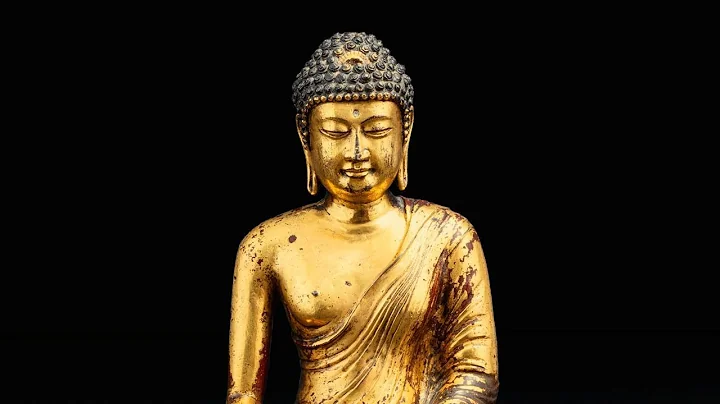

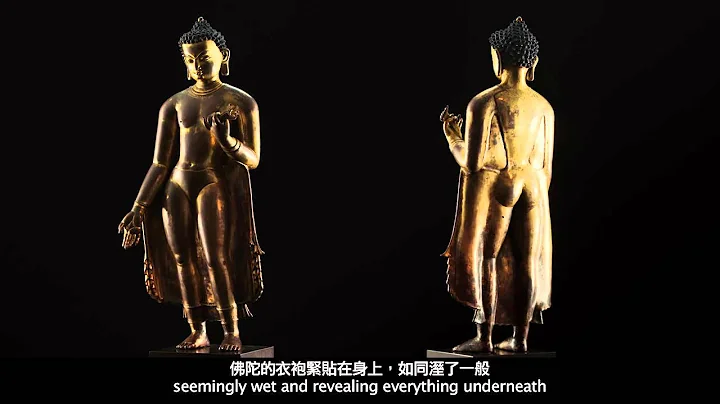
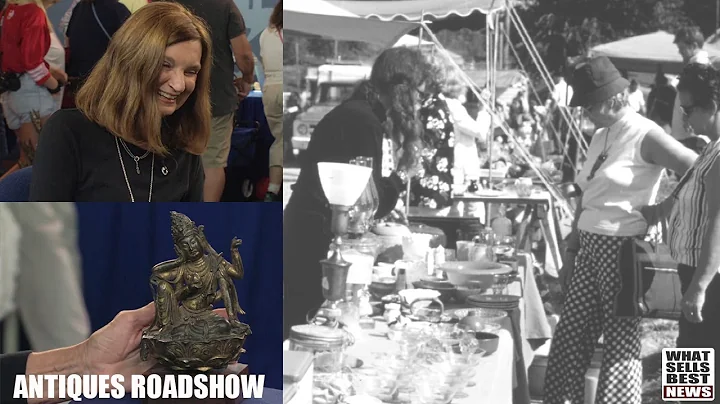
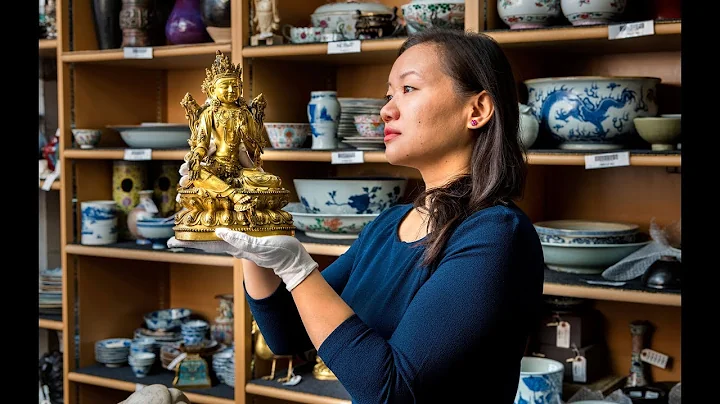
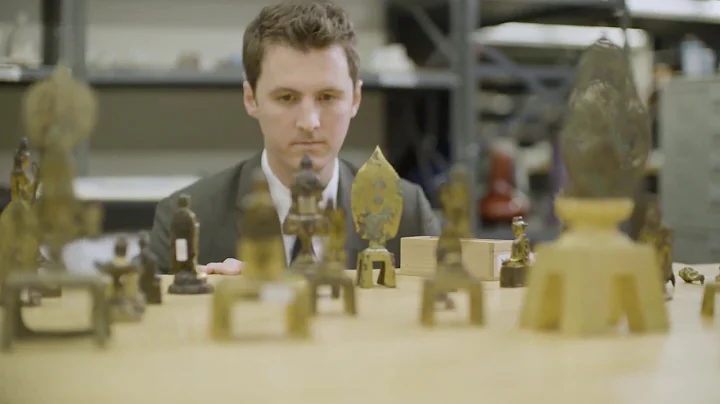

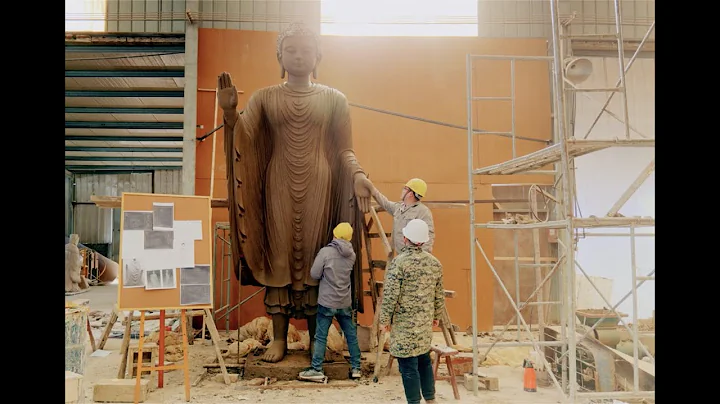
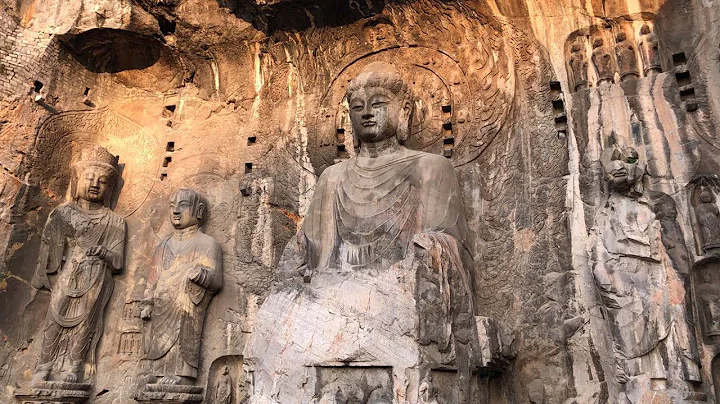
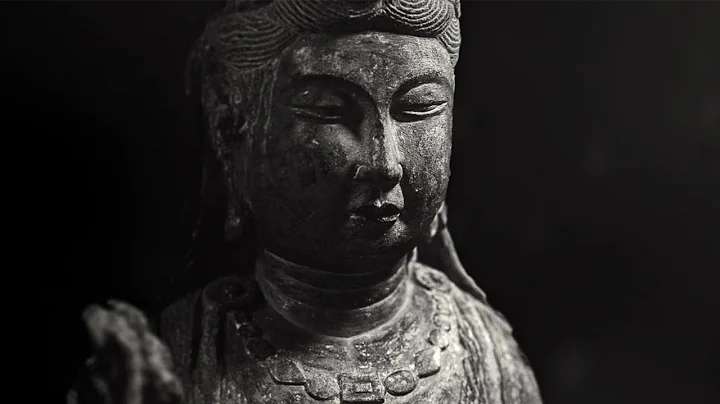
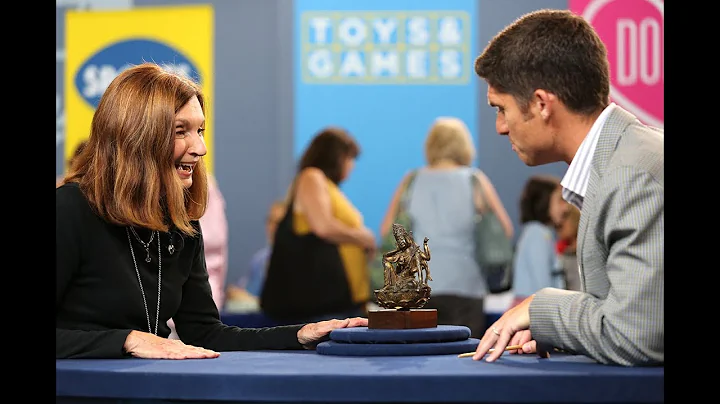






![[English] Who Am I - Lecture 1 - Ven. Guan Cheng - DayDayNews](https://i.ytimg.com/vi/KU0fUs2It5o/hq720.jpg?sqp=-oaymwEcCNAFEJQDSFXyq4qpAw4IARUAAIhCGAFwAcABBg==&rs=AOn4CLDFpQUN_QwRfC7bmP4sUadq-RcYdg)
![A Moving Masterpiece 清明上河图 [English narration] - DayDayNews](https://i.ytimg.com/vi/kxff-4GktOI/hqdefault.jpg?sqp=-oaymwEcCOADEI4CSFXyq4qpAw4IARUAAIhCGAFwAcABBg==&rs=AOn4CLBtHGLeUpJNCYDJYnZTuISQ1N5Vag)

